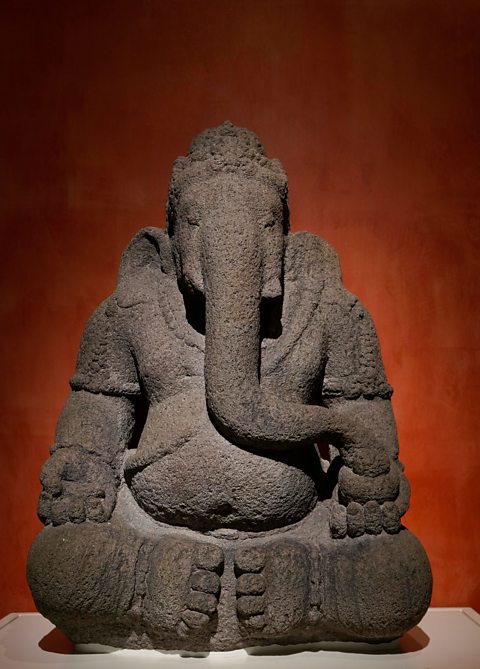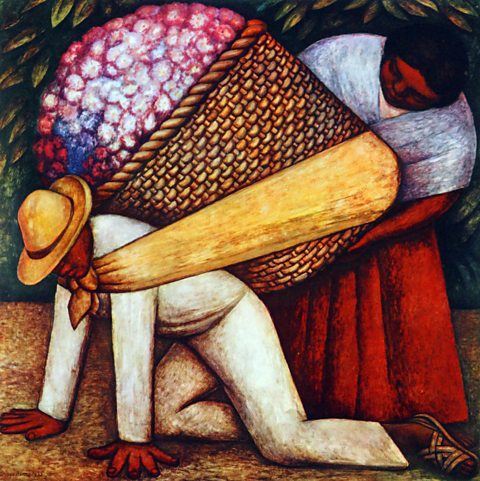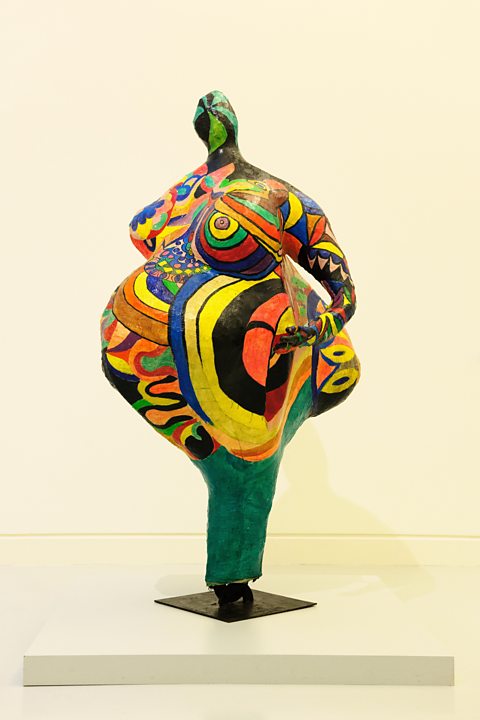Perceived mass
Forms have mass. The mass of a form is a result of its size and the material it is made from. The greater the mass the heavier a form is.
The appearance of an object can change how heavy it looks â its perceived mass. For example darker and more intense colours, or more detailed textures tend to appear heavier.

This statue of Ganesh, Remover of Obstacles (9th or 10th Century) appears to be heavy because of its form and the material it is made from.
The statue has a rough dome shape, widening out from the head to solid arms and a rounded belly and ending with legs which form a broad and thick horizontal band.
There is no negative space and the figure appears as one heavy, closed mass. The fact that it is made from dark, rough andesite stone increases the idea that this carries great mass.


In The Flower Carrier (Diego Rivera, 1935) the title character is shown struggling under the weight of an enormous basket of flowers. This implied form appears heavy as a result of Riveraâs technique.
The size of the basket makes it dominate the picture. It has a more detailed and heavier texture than the rest of the painting. The shape of the basket and flowers bulge at the sides and bottom.
The sling that ties the basket to the man's back appears stretched tight as if struggling to hold the basket.
The manâs posture and the spread of his hands suggest his struggle to hold the load.


Tall Tree and the Eye (Anish Kapoor, 2009) is a 13 metre tall sculpture made from 73 reflective spheres. Anish Kapoor's sculpture is made of geometric forms but these are arranged in what seems a random and organic arrangement.
Despite its size, the sculpture appears very light because the spheres are arranged in a way that makes them appear to hang in space. If the spheres were heavy we would expect the sculpture to collapse.
The perceived mass and volume of the forms is also decreased by their reflective surfaces. These appear to break up the solid forms.


Elisabeth (Nana) (Niki de Saint Phalle, 1965) is one of a series of Nana sculptures. These large scale sculptures of women feature very rounded forms that could appear heavy but donât. Although large, the figure is made from papier mĂąchĂ©, so it is physically light.
The vibrant colours and patterns break up the form so this sculpture does not read as so large a mass.
The rounded shapes curve sideways rather than sagging down. This and the fact that the whole sculpture is balanced on legs that narrow down to a small base make the figure appear light, and as if unaffected by gravity.
